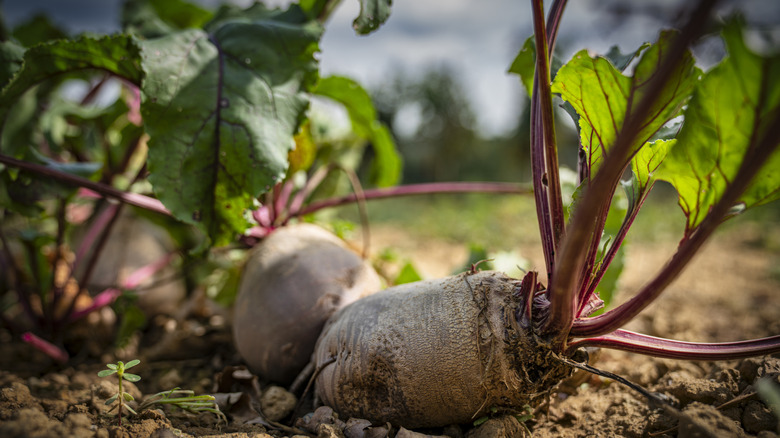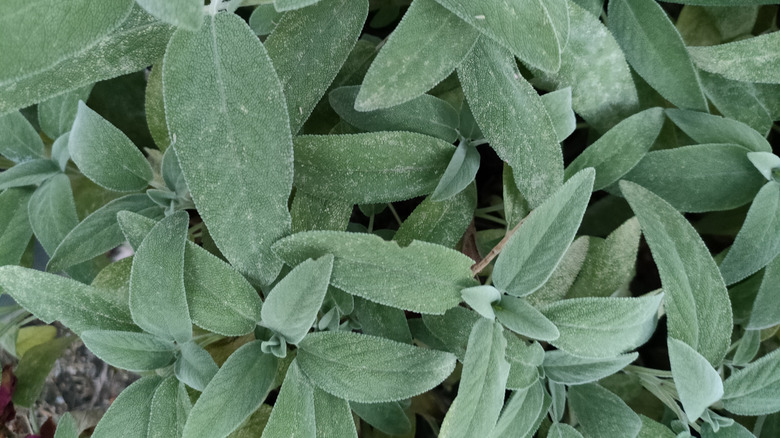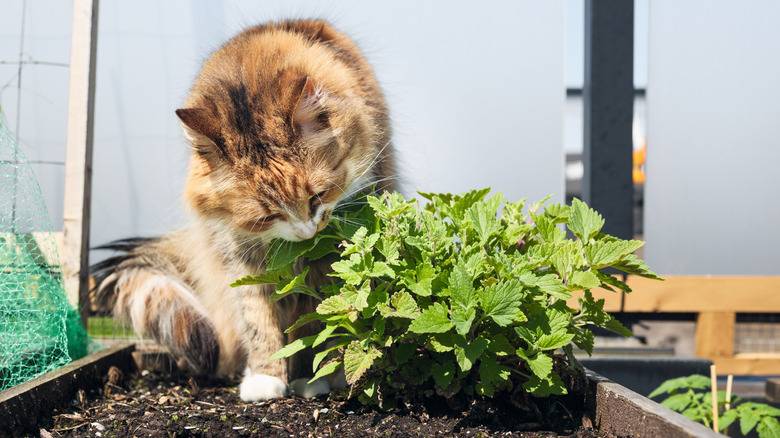The Best Herbs To Grow With Beets In Your Garden
When you're planning what to plant, understanding companion planting and how it can benefit your garden is key to making the most out of your available space. That's true no matter what you are planting, but if you're hoping for a better harvest of beets (Beta vulgaris) this year, you will want to consider pairing them with a couple of herbs. Sage (Salvia officinalis) and catnip (Nepeta cataria) make great companions for beets, and they should be on your plant list.
Herbs of all kinds are regularly used as companion plants, mainly because of their pest repellent properties. Sage and catnip are no different. Couple them together and you can count on repelling everything from the tiniest aphids to hungry voles and rabbits. These herbs also happen to thrive in the same conditions as beets, making them a great option to keep your harvest safe from marauding garden invaders. Beets prefer full-sun and moist, rich, but well-drained soil, but light, sandy soils are also a favorite.
Growing sage with your beets
As a Mediterranean herb, just about the only soil conditions sage won't tolerate is wet. While beets can tolerate some shade, sage prefers full sun or only the slightest bit of shade. Bees and butterflies also happen to love this herb, so you can expect pollinators to visit.
While sage can attract beneficial visitors to your garden, it will repel the critters you don't want to see hanging around your veggie patch. Snails, flea beetles, and cabbage moths all steer clear of sage. Flea beetles tend to be a problem for beets, making sage a wise choice as a garden companion. If you give your sage the right conditions to thrive, you may have more than you know what to do with. Explore the genius ways to use sage around the house to ensure none of this aromatic herb goes to waste — it may just end up being one of the most useful plants in your garden. Typically grown as an annual herb, it is hardy in USDA Zones 4 through 8.
Growing catnip with your beets
Catnip may not be the first herb you think of when planting your garden, especially if you're trying to keep the neighborhood cats away. However, this plant has many benefits and may have you thinking harder about including it. This herb tends to thrive in dry to medium soil, and can handle full sun or part shade. In other words, it's not picky about its conditions and can easily thrive in the garden next to your beets.
When it comes to pests this plant deters, the list is long. From tiny pests like aphids, flea beetles, Japanese beetles, and Colorado potato beetles to bigger problems like mice and voles, this plant practically puts up a forcefield of protection around its area. Because of this, you may want to think about learning how to successfully grow a catnip plant. Hardy in USDA Zones 3 through 7, it sometimes naturalizes in gardens.
If, however, you've also got a cat problem in your garden, you might want to skip this one, and instead plant mint (Mentha sp.). It deters many pests without bringing all the neighborhood cats by for a visit, but as many gardeners know there are some downsides to growing mint. Specifically, mint can easily take over in the garden, and is therefore best grown in containers. Plan accordingly if you will use it to help protect your beets.


